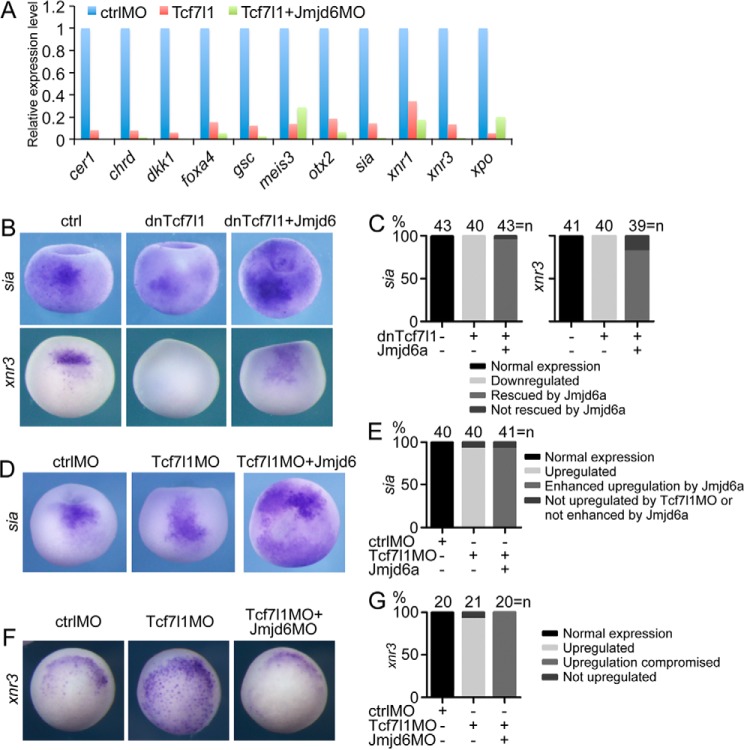FIGURE 7.
Jmjd6 mediates Tcf7l1-regulated gene transcription. A, microarray result showing that Jmjd6 knockdown in X. laevis embryos enhanced the repressive effect of Tcf7l1 on the transcription of Wnt/β-catenin target genes involved in germ layer induction and patterning but did not enhance the effect on other genes. B, in Xenopus late blastula embryos, injection of mRNA (200 pg) for dominant-negative Tcf7l1 that lacks the β-Catenin binding site led to the repression of Wnt target genes. Coinjection of Jmjd6a mRNA (1 ng) reversed the repression effect. All embryos are shown in dorsal view with the animal pole being orientated to the top. ctrl, control. C, numbers and percentages of embryos showing different changes in gene expression in response to injection of dnTcf7l1 and Jmjd6 mRNA, as shown in the experiments in B. D, knockdown of endogenous Tcf7l1 in Xenopus late blastula embryos via injection of Tcf7l1MO (40 ng) up-regulated the Wnt target gene, whereas simultaneous injection of Jmjd6a mRNA (1 ng) enhanced the up-regulation of gene expression and even caused ectopic transcription. In the left and center panels, embryos are shown in dorsal view with the animal pole being placed at the top. In the right panel, the embryo is shown in animal view. sia was even ectopically expressed in the animal pole. E, numbers and percentages of embryos showing different changes in gene expression in response to injection of Tcf7l1MO and Jmjd6 mRNA, as shown in the experiments in D. F, injection of Tcf7l1MO (40 ng) caused an increase in expression of the Wnt target gene in Xenopus blastula embryos. However, the increase was weakened severely when Jmjd6MO (20 ng) was injected at the same time. G, numbers and percentages of embryos showing different changes in gene expression in response to injection of Tcf7l1MO and Jmjd6MO, as shown in the experiments in F.

